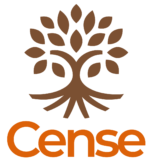
When undertaking strategic planning for organizations operating in the complex space of health and human services, how do you account for creating meaningful ways to learn and adapt? Developmental Evaluation is how.
Developmental Evaluation is a means to provide evaluative insight to guide the evolution of your program, but did you know it can be a tool within a strategic planning framework?
By use of strategic planning, we’re speaking about something designed for human and living systems. These are the kind of complex, dynamic and evolving organizational environments that don’t respond well to traditional strategic plans. Those traditional models (e.g., logic models, five-year plans, Gantt charts) have three fundamental assumptions that make them problematic for these contexts:
- Stable environments
- Predictable cause-effect relationships
- Static goals and controllable variables
In short, these approaches discount complexity. Complexity describes systems (interactions within a context) made up of many interacting parts that create patterns or behaviours too intricate to predict from their simple components alone. It’s the phenomenon where a “whole becomes more than the sum of its parts,” yielding emergent properties that aren’t obvious from studying individual elements in isolation. These are predictive systems, rather they are ones that are influenced — and that’s what a strategic plan in this context is meant to do.
A great complexity-informed strategic plan encourages a design that is adaptive, flexible, yet also offers meaningful guidance and the capacity to learn as you go.
Creating the Means to Learn and Adapt
In complex social systems, emergent behaviour, feedback loops, and interdependencies render linear models unhelpful and simplistic at best, harmful at worst. Traditional models are also difficult because of their tendency to promote goal fixation. Focusing too rigidly on predefined outcomes can lead organizations to ignore shifting contexts, miss emergent opportunities (or squelch adaptive behaviour that comes through emergence),and undermine adaptation and learning within the organization.
Developmental evaluation (DE) is an evidence-generation and sensemaking approach that assists leaders in addressing these issues using data about their programs to facilitate learning, strategy, and adaptation.
We often don’t immediately think about evaluation when we think strategy (isn’t that what we do after the strategy is developed?), yet by building a system that includes a feedback and learning approach like DE by design into the strategy, we’re far more likely to use it.
One of the limitations of DE is that it- like most evaluation models, frameworks, and designs- is created once a program design is already in place or launched. This limits the utility by forcing the evaluation to fit the program, rather than embedding it more fulsomely in the program. This is a design-driven approach to evaluation and strategic planning.
The connection to strategic planning involves incorporating the feedback, learning, and evidence-guided adaptation capacity into the fabric of the plan.
DE and Strategic Planning
Too often, ‘adaptive strategy‘ is reduced to “make changes as you go” without a clear means of knowing what to change or guidance on how to use feedback to shape that change. Taking a design-driven approach and integrating developmental evaluation into the strategic planning process ensures that this part is covered.
This means ensuring that, just as you might design some key features of a strategic plan, like a SWOT analysis, a review of the mission and vision, or an implementation roadmap, you insert evaluation and learning into your plan. This means embedding points for data collection and analysis, synthesis, and sensemaking as part of the plan’s implementation. Unlike traditional strategic planning models, evaluation is something done after-the-fact. What a design-driven, DE-informed approach does is make evaluation and the attention to feedback a part of the process from the beginning.
Just as you design (create with intention and skill) your strategic plans, so should you do the same with the means to make that plan a success. If you’re designing your strategy for the real world (and not just creating a plan for its own sake), then adding DE to your process and plan is one way to ensure that you go further and do more.
For more on this, read: Norman, C. D. (2021). Supporting systems transformation through design-driven evaluation. New Directions for Evaluation, 2021(170), 149–158. https://doi.org/10.1002/ev.20464
To learn more about this and how Cense creates complexity-ready strategic plans and developmental evaluation, reach out and let’s talk.
Photo by Kelly Sikkema on Unsplash

